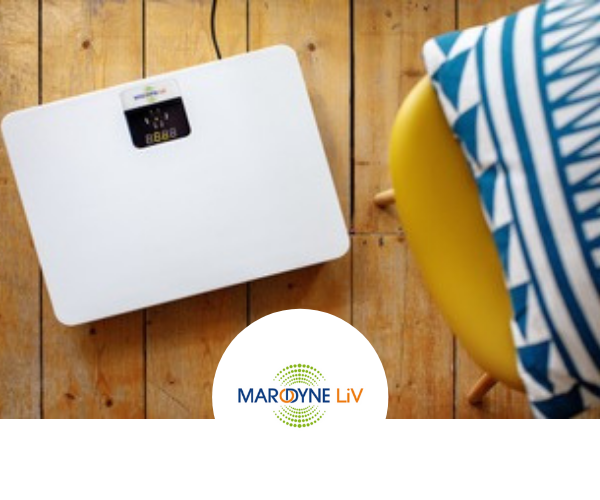Menopause signals prime time to prioritise your bone health

Did you know that menopause is a major risk factor for a sharp drop in bone density leaving you vulnerable to osteoporosis?
Because you can’t see or feel your bones losing their density, you can be completely unaware of the problem until you have a fracture. By which time the disease is far harder to treat and manage. Unlike other menopause symptoms that will improve over time, deteriorating bone health will simply get worse if you don’t address it.
Knowing that menopause will trigger a change in your body’s ability to build healthy bone tissue, now is the time to take action to prevent this disease. And the sooner you start, the better.
What happens to my bones during menopause?
Oestrogen plays a key role in the formation of bone tissue. It does this by keeping the balance between bone formation (building up) and bone resorption (breaking down). As oestrogen levels drop during and after menopause, bone resorption increases, accelerating bone loss. This, in turn, puts you at risk of developing osteoporosis and suffering bone fractures. If you have an early menopause before the age of 45, you’re at an even greater risk of this happening.
It’s thought that women can lose up to 20% of their bone density between five to seven years after menopause and scientists estimate that up to half of all women aged over 50 will break a bone because of osteoporosis.
How can I build new bone tissue?
Bone is made up of living tissue which can be regenerated if you stimulate your bone building cells (osteoblasts) into action. Here at Menohealth we specialise in weight bearing exercises designed to boost your bone building activity. Aerobic activity that involves you ‘landing’ on your feet – including running, jumping and skipping – is good for your bones. In addition, lifting weights like dumbbells and kettlebells and using your own bodyweight in exercises like squats, lunges and press ups all make your muscles pull on your bones to stimulate them into action. Staying physically active is your first line of defence against losing bone density alongside eating a healthy diet including good sources of calcium, vitamin D and leafy greens. Not smoking and minimising your alcohol intake are also strongly advised.
Best kept secret revealed – Marodyne LiV
Marodyne LiV is another way to naturally build stronger bones. It does this by delivering Low Intensity Vibrations (LiV) that will stimulate your body’s bone building factory into action. LiV is backed by over 50 years of scientific research and Marodyne LiV is clinically proven to naturally prevent and combat osteoporosis while improving movement, flexibility and freedom in just 10 minutes a day.
The low intensity vibrations delivered by Marodyne LiV are targeted low-magnitude mechanical signals precisely set at a frequency of 30 Hz which is known to stimulate your body’s stem cells to reform bone and muscle tissue.
The device is very easy to use: you simply stand on its low platform for 10 minutes a day. That’s it! As you do so, you’ll feel the low-intensity vibrations send a pleasant and gentle buzz through your body. The sensation is very gentle and sometimes described as being like a purring cat.
No side-effects and 100% natural
You’ll be reassured to know that the device has no side-effects or contra-indications, meaning it can be used safely alongside all prescription drugs and/or HRT medication commonly offered during and after menopause.
Prevention better than cure
Marodyne LiV can be used to combat osteopenia and osteoporosis but, like most things in life, ‘prevention is better than cure’. Knowing that the moment you start the menopause, your oestrogen levels will drop and your bone health will be compromised, taking preventative action to maintain your bone density with Marodyne LiV makes perfect sense.
Here at Menohealth we are always on the lookout for new and complementary ways to keep you fit, healthy and well. We can definitely see the potential for Marodyne LiV to play its part. We also love the fact it can be used long into later life, making it a great investment in your long-term health.
Built by NASA
The history of Marodyne LiV began 35 years ago when Professor Clinton Rubin from the Stony Brook State University of New York was commissioned by NASA to understand how mechanical signals can influence the musculoskeletal system. Astronauts’ bones don’t experience loads while they are weightless in space and this leads to the loss of bone mineral density, just as in osteoporosis. On average, an astronaut loses as much bone in space in one month as a perimenopausal woman does on earth in one year.
Professor Rubin and his research teams broke the code and found that low-intensity vibrations that deliver a precise and targeted low-magnitude mechanical signal at a frequency of exactly 30 Hz will stimulate and regulate critical stem-cell processes to trigger the body to regenerate bone tissue. It took 35 years to perfect the technology that resulted in the Marodyne LiV device that you can buy to use at home.
Certified and safe
Certified as a safe and effective tool to help people with osteopenia and osteoporosis, Marodyne LiV is supported by a number of clinical studies that prove low-intensity vibration can help prevent osteoporosis in post-menopausal women and promote bone and muscle growth in younger osteoporotic women.
See more here www.mybones.health
A word of warning
Low Intensity Vibration (LiV) must not be confused with Whole Body Vibration (WBV) – which you find in more vigorous vibrating plates at the gym. In fact, WBV is contra-indicated for people with poor bone health, so it’s best avoided if you have any concerns about your bone health.